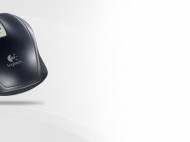Logitech mice work where others currently fail
 Logitech research showed that 40 percent of people have a glass surface in their home. This coupled with the increase in the popularity of laptop computers, means that people are moving around and coming into contact with a multitude of surfaces – like granite and lacquered wood – that challenge the tracking capabilities of standard mice. Logitech Darkfield Laser Tracking enables you to use your mouse virtually anywhere you want. From now on you can use it on clear glass (that’s at least 4 mm thick) and high-gloss surfaces. This new technology is available in the Logitech Performance Mouse MX and the Logitech Anywhere Mouse MX, giving you the option of a full-size mouse or a more compact, notebook mouse.
Logitech research showed that 40 percent of people have a glass surface in their home. This coupled with the increase in the popularity of laptop computers, means that people are moving around and coming into contact with a multitude of surfaces – like granite and lacquered wood – that challenge the tracking capabilities of standard mice. Logitech Darkfield Laser Tracking enables you to use your mouse virtually anywhere you want. From now on you can use it on clear glass (that’s at least 4 mm thick) and high-gloss surfaces. This new technology is available in the Logitech Performance Mouse MX and the Logitech Anywhere Mouse MX, giving you the option of a full-size mouse or a more compact, notebook mouse.
“Laptops have gained popularity in the last several years because of the freedom they afford – people today want to be able to connect to their digital world anytime, anywhere. However, until now, no mouse has been able to match that flexibility,” said Rory Dooley, Logitech’s senior vice president and general manager of the Control Devices business unit. “Thanks to Logitech Darkfield, whether you’re checking the morning news from the granite counter top in your kitchen or at work manipulating a spreadsheet from your glass desk, you can be confident that your Logitech mouse will be up to the task.”
Regular laser tracking technology relies on the ability of the mouse’s sensor to detect the textural details of the surface. The more irregularities a surface exhibits, the easier it is for the sensor to identify reference points that it can use to accurately measure motion. However, because high-gloss surfaces such as glass are almost completely flat, there are not enough details for a typical laser mouse’s sensor to detect.
To track on glass (that’s at least 4 mm thick), Logitech Darkfield uses dark field microscopy to detect microscopic particles and micro-scratches on these surfaces, rather than tracking the surface itself. Similar to the way in which our eye sees the clear night sky, the mouse’s sensor sees the clean areas of glass as a dark background with bright dots – the dust. Then, the sensor interprets the movement of these dots to track exactly where you’ve moved the mouse.
This new technology is available on a full-size mouse as well as a more compact, notebook mouse. However, both mice are designed to put you in control of your digital world. Both models feature hyper-fast scrolling, so you can fly through long documents with ease, while click-to-click mode gives you more precision when navigating lists, photos and slide-shows.









Leave your response!